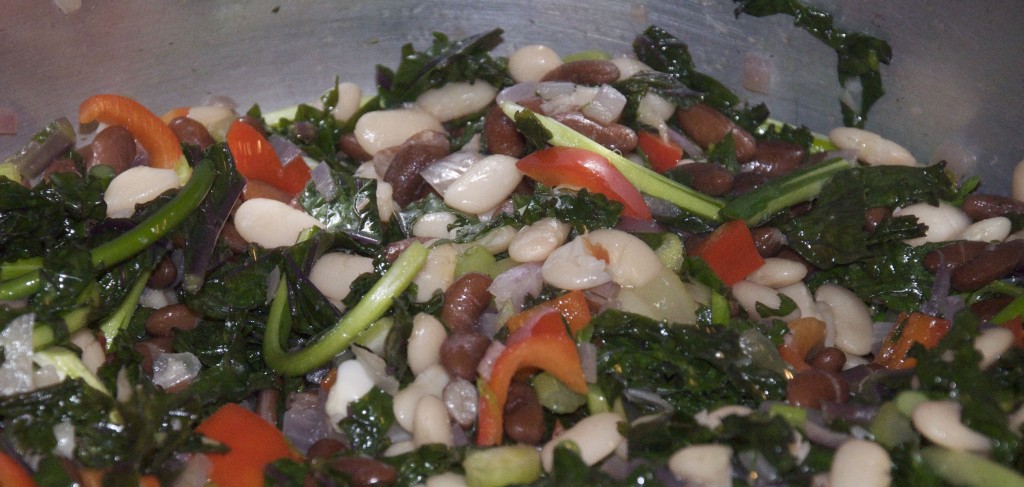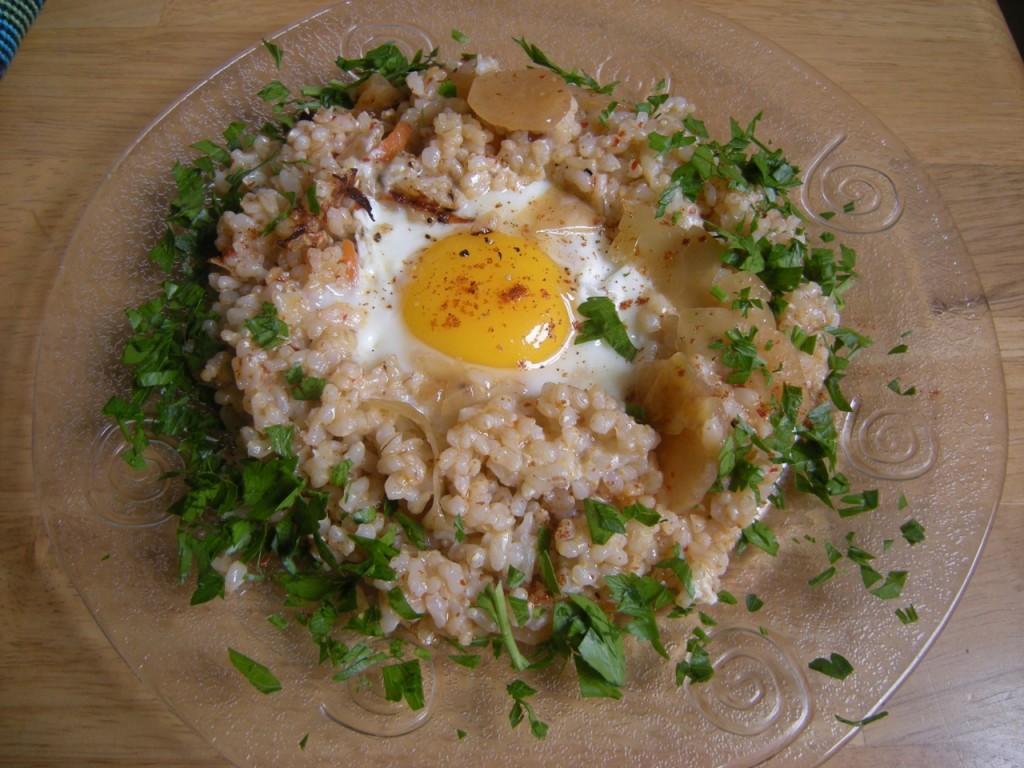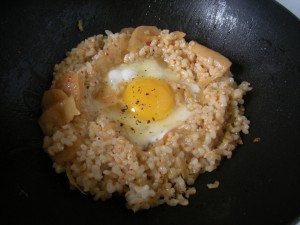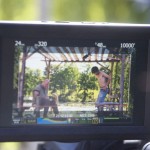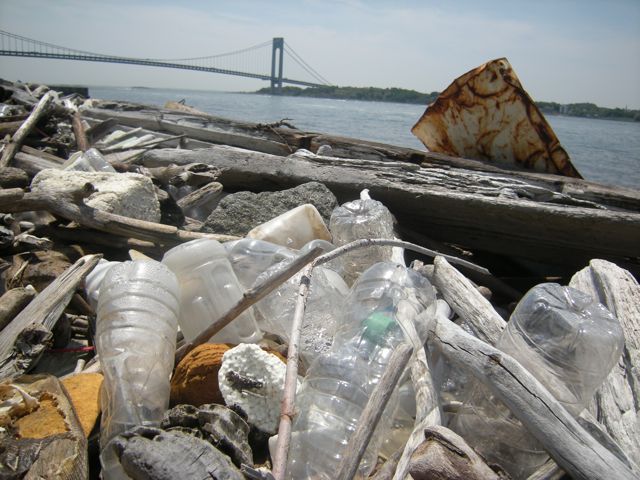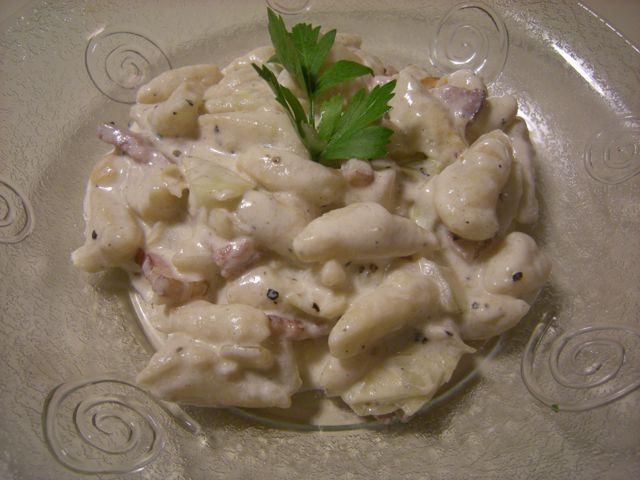As blogged last week, this past Friday I set up my kitchen/stage at 5C Café in Manhattan. I want to thank Michael Bisio who delighted us on bass, Pierre Joris, Yuko Otomo & Steve Dalashinky who read fun & beautiful food & Paris poems, Miles Joris-Peyrafitte who took the photographs and helped set up/clean up, Adrien Aquilina for his assistance on waiting tables, as well as Bruce, Trudy & the volunteers at 5C for their graceful hospitality & for giving me the opportunity to cook and sing. Many thanks also to a sophisticated, warm & engaging audience. Please feel free to post comments about the evening if you were there. If you were not there: the menu, the recipe of the main course, & Miles’ photographs are below.
But first let me tell you about my next performance coming up this Thursday with Peter Knoll on electric guitar. No food this time, but singing 3 French songs. I am really excited to be part of the Mongrel Vaudeville, and looking forward to the various & extravagant performances.
Program:
Mongrel Vaudeville “Blue Moon in June”
What: Performance
Host: Julian of Nowherr
Start Time: Thursday, June 25 at 8:00pm
End Time: Thursday, June 25 at 10:00pm
Where: thru the swingin doors at Freddy’s Bar & Backroom
485 Dean Street Brooklyn, NY 11215
That’s the corner of Dean Street and 6th Avenue in Brooklyn.
Now Friday’s menu:
Appetizers:
Sardine Paté w/ pink peppercorns (see Sardine Tartine blog ; all I added were the pink peppercorns)
Syrian Cheese served with green spicy Turkish and black Moroccan lemon olives
Baguette
Main Course:
Summery Garlicky Beans & Kale
(Thank you d’Artagnan for the coco Tarbais beans)
Dessert:
Strawberry short cake w/ live whipped cream!
(Thank you Pierre Landet for the pan and the strawberries)
Photographs by Miles Joris-Peyrafitte
Summery Garlicky Beans & Kale Recipe
I don’t have exact proportions, and it is really up to you to make it the way you like. Though as a rough indication here are the ingredients and the proportional ratio.
Soak beans over night: 2/3 white (coco tarbais) for 1/3 red beans (dark red pinto beans).
Cook your beans separately and reserve.
Sauté —in duck fat, or olive oil— enough diced onions to cover the bottom of the skillet in which you will cook your dish.
Add a few ribs of diced celery and diced red pepper. Sauté for a few minutes.
Add the purple kale, about half the pot, sauté until wilted.
Add the green garlic cloves. Make sure you buy them with the green stalk attached. Use about 1/2 a head per person. Green fresh garlic is very mild, do not be afraid.
Add about 1 to 2 garlic scapes per person (see last blog for info on scapes). Make sure they are very tender, if not peel them and cut them like green beans.
Salt & freshly ground pepper.
Add stock or water to just cover your vegetables & legumes.
Cook for about 40/60 minutes depending how big your pot.
Just before serving add one tablespoon of a pesto —my “pesto” had only basil/regular garlic & olive oil, but nothing prevents you to add pignoles and cheese. I just wanted to keep it light as the appetizer had cheese and the dessert, whipped cream.
Make it soon because the garlic ain’t gone be fresh for much longer.


